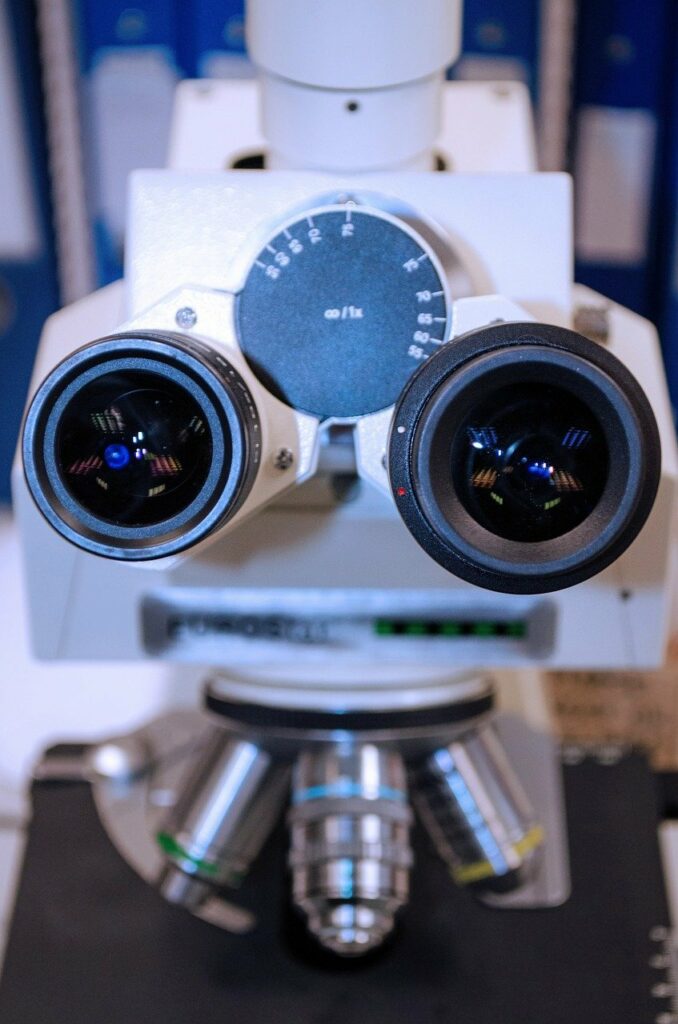I- Parts of a microscope
How to use a microscope? first you have to know all its parts.
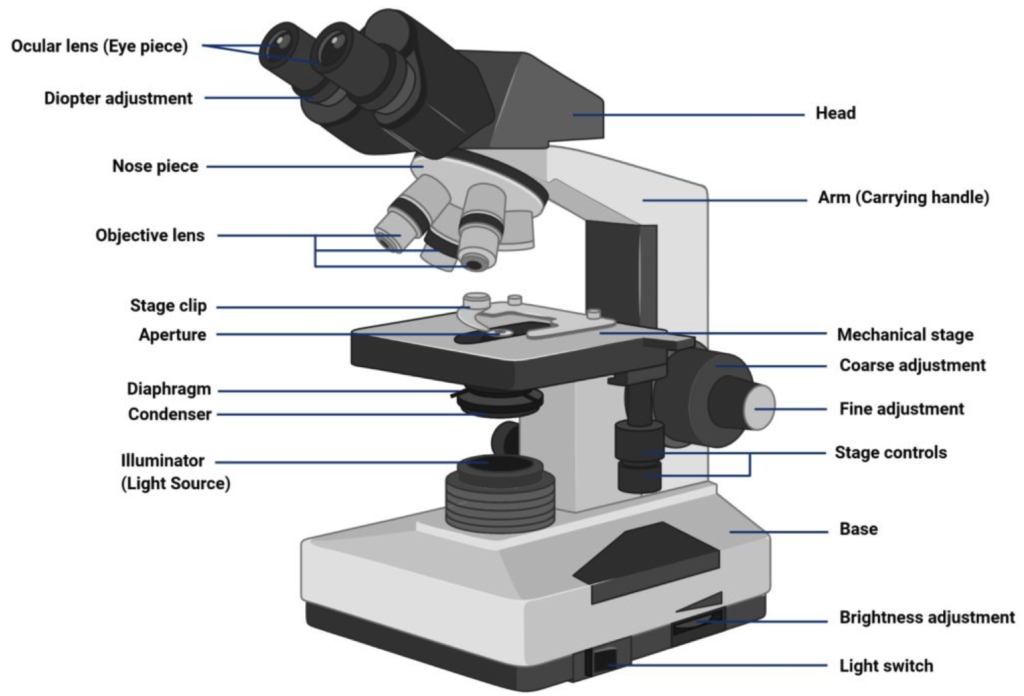
Eyepiece: This is the where you look into the microscope. eyepieces are usually labelled x10 or x15.
Objective Lens: There are usually three objective lenses. Typically these would be labelled X4 x10 and x40 on a school microscope.
Stage: Is the part of the microscope which holds the slide.
Slide: Is a rectangular piece of glass used to hold the specimen.
A Coverslip: Is a piece of thin glass placed over the item you are examining on the slide.
Coarse Focus: is used to focus the microscope on the item you are examining
Fine Focus: is used to change the focus slightly, so that the specimen (The item under examination) is very clear.
Light: is used to illuminate the specimen. In order to view something with a microscope. Some microscopes use a mirror instead of a light.
magnification of a microscope: Is calculated by multiplying the eyepiece power by the objective power. Therefore if we have a X10 eyepiece and have selected a x15 objective lens. the magnification is 150. This means that the object we are looking at (The Specimen) is being magnified 150 times
II- How to manipulate?
Prepare your microscope
1. When moving your microscope, always carry it with both hands (Figure 1). Grasp the arm with one hand and place the other hand under the base for support.
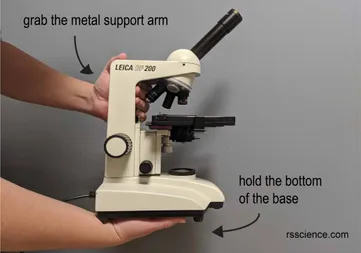
2. Turn the revolving nosepiece so that the lowest power objective lens is « clicked » into position.
3. Place the microscope slide on the stage and fasten it with the stage clips. You can push down on the back end of the stage clip to open it.
Adjust your vision
4. Using the coarse adjustment, lower the objective lens down as far as it will go without touching the slide! Note: Look at the slide and lens from the side when doing this (see Figure 2).
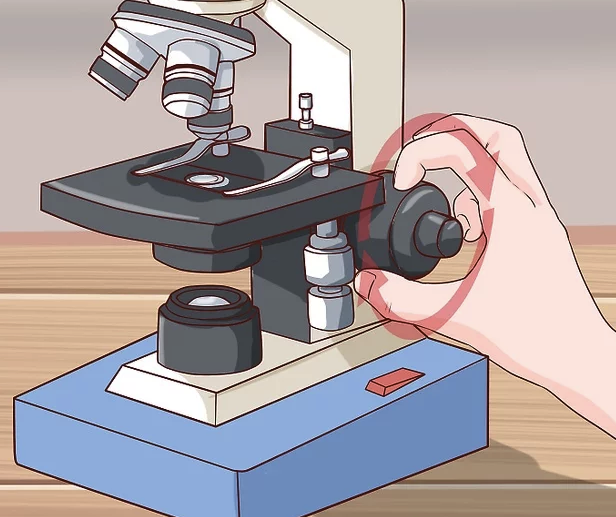
5. Look through the eyepiece and adjust the illuminator (or mirror) and diaphragm (Figure 3) for the greatest amount of light.
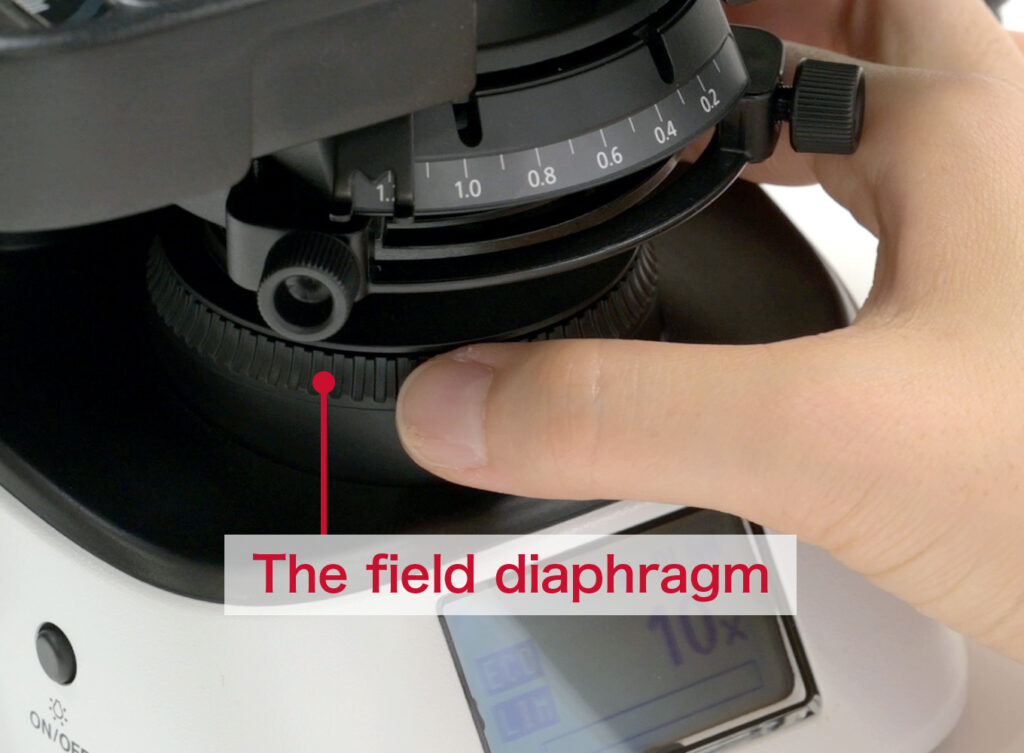
6. Slowly turn the coarse adjustment so that the objective lens goes up (away from the slide). Continue until the image comes into focus. Use the fine adjustment, if available, for fine focusing.
7. Move the microscope slide around so that the image is in the center of the field of view and readjust the mirror, illuminator or diaphragm for the clearest image.
Be careful
8. You should be able to change to the next objective lenses with only slight focusing adjustment. Use the fine adjustment, if available. If you cannot focus on your specimen, repeat steps 4 through 7 with the higher power objective lens in place. DO NOT ALLOW THE LENS TO TOUCH THE SLIDE!
9. The proper way to use a monocular microscope is to look through the eyepiece with one eye and keep the other eye open (this helps avoid eye strain). If you have to close one eye when looking into the microscope, it’s ok. Remember, everything is upside down and backwards. When you move the slide to the right, the image goes to the left!
10. Do not touch the glass part of the lenses with your fingers. Use only special lens paper to clean the lenses. (read the page on keeping your microscope clean)
11. When finished, raise the tube, click the low power lens into position and remove the slide.
Remember, microscopes are expensive scientific instruments. Handle them properly and carefully and they will last for many years
To train to observ with a microscope
Do you want to train yourself? Go on EXPLORE on the website just below… Have fun!
Link to the virtual microscope: https://www.ncbionetwork.org/iet/microscope/

